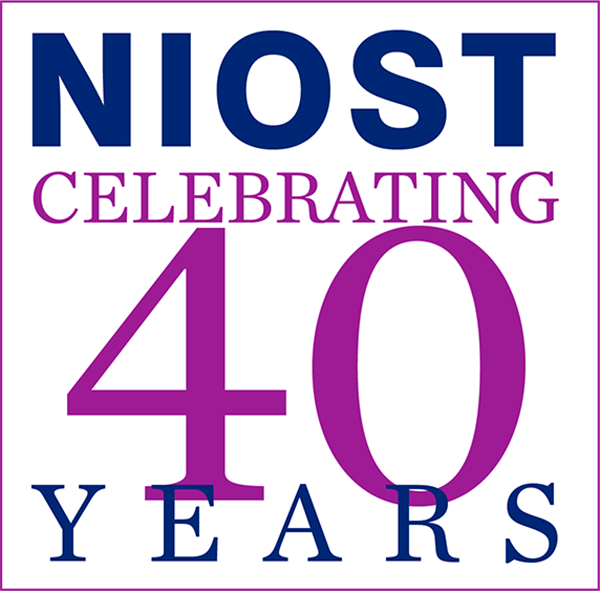Creating and Supporting Pathways to Sustained Careers in Youth Work
February 10, 2023
 Below is an excerpt by Nancy Peter, Ed.D., director of the McKinney Center for STEM Education at the Philadelphia Education Fund, from the book The Heartbeat of the Youth Development Field: Professional Journeys of Growth, Connection, and Transformation. The book was co-edited by NIOST Director Georgia Hall, Ph.D., Jan Gallagher, Ph.D., of Clear, Effective Communications, and NIOST Research Associate Elizabeth Starr, M.Ed. Here, Peter talks about the many pathways people take into youth work, and the need to support them with clear entry points, opportunities for advancement, fair compensation, and continuous professional development—no matter how they arrived in the field.
Below is an excerpt by Nancy Peter, Ed.D., director of the McKinney Center for STEM Education at the Philadelphia Education Fund, from the book The Heartbeat of the Youth Development Field: Professional Journeys of Growth, Connection, and Transformation. The book was co-edited by NIOST Director Georgia Hall, Ph.D., Jan Gallagher, Ph.D., of Clear, Effective Communications, and NIOST Research Associate Elizabeth Starr, M.Ed. Here, Peter talks about the many pathways people take into youth work, and the need to support them with clear entry points, opportunities for advancement, fair compensation, and continuous professional development—no matter how they arrived in the field.
Youth workers are often described as “passionate.” They feel called to do the work, have a strong desire to serve or give back to their communities, and are committed to building positive relationships with youth. Most likely a conversation with a youth worker will quickly reveal their passion. This is corroborated by the research: surveys consistently show that this passion for the work is a strength of the field. The practitioner essays that make up this book give voice to this hard-to-describe quality—a passion, a calling, an artistry, the heart work. It is part of what makes this workforce unique. Moreover, it is part of what makes this workforce impactful. It is a true strength that can and should be articulated, celebrated, and leveraged. The aim of this book is to shine a spotlight on this strength.
This passion, though, is only one part of the picture of a strong workforce, and elevating it is only one part of our work as field-builders and leaders. It also needs to be supported. Critical foundational workforce supports—clear entry points, opportunities for advancement, fair compensation, and continuous professional development—are needed to sustain the energy and commitment the workforce brings.
As the field struggles with recruitment, a longstanding issue exacerbated by the pandemic, we need to better understand the mechanisms by which people currently enter youth work. Like many of the youth practitioners in this chapter’s essays, I did not set out to become a youth work professional. In college, I majored in animal behavior because I loved animals. That love led me to volunteer at the local environmental education center—where I discovered a passion for education that has guided me ever since. I worked in environmental education, then in museum education, and then in a large city park. That’s when I realized I was also interested in work that affected people. I moved into children’s policy, out-of-school time programming, and positive youth development. Today, as director of the McKinney Center for STEM Education at the Philadelphia Education Fund, I no longer work directly with youth. Instead, I focus on professional development, curriculum development, and organizational capacity-building.
Whichever pathway they take into the field, youth workers are similar to workers in any other field: they need to be supported with opportunities for professional growth and continual professional development. A strong system is needed to provide this support, including the option of academic pathways, both access to credentials and higher education; career pathways tying experience, professional development, and formal education to advancement; and increases in compensation and benefits commensurate with experience and training.
Professional development is one specific workforce support that enables youth workers to develop their skills and knowledge and advance in the field. The practitioner authors in this book talk about their ongoing, meaningful professional development to scaffold growing competence and confidence, whether that means attending workshops and conferences, being mentored, or coached by a supervisor or colleague, participating in a peer learning community, or—for most—some combination of these.
In these essays, mid-career youth workers present their own compelling stories of their entries into the profession, their journeys up the career ladder, their successes, and the obstacles they have overcome. Several essayists emphasize how their own participation in youth programs influenced their eventual choice to work in such programs. Three of the five describe circuitous routes into the field. Only one entered college with the intention of getting a degree to support a career in youth work, though others mention college work along the way. For all five, their professional pathways took unanticipated twists and turns. Every one of them experienced on-the-job learning and professional development that ranged from formal opportunities to informal mentorships and coaching.
As a field, we must explore the ways in which career pathways are more available to some potential youth workers than to others. Then we can integrate ongoing research with our individual and collective stories to find ways to redress these fundamental inequities.
Nancy Peter, Ed.D., is the director of the McKinney Center for STEM Education at the Philadelphia Education Fund. The above excerpt appears in the book The Heartbeat of the Youth Development Field: Professional Journeys of Growth, Connection, and Transformation.



